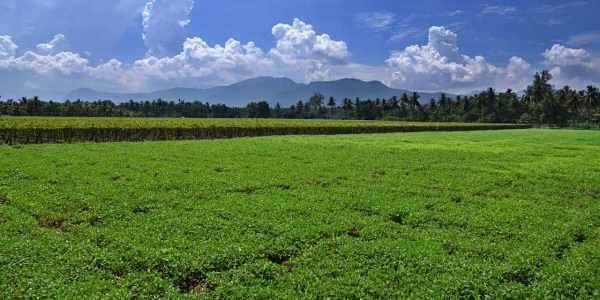SUPREME COURT HOLDS THAT SUB LESSEE OF A LAND CANNOT CLAIM RIGHT AS INDEPENDENT TENURE HOLDER
A Two-Judge Bench of the Hon’ble Supreme Court in the matter of Hardev Singh v. Prescribed Authority, Kashipur & Anr. (Civil Appeal Nos. 2295/2010) and Jamaluddin & Ors. v. Prescribed Authority, Kashipur & Anr. (Civil Appeal Nos. 2296/2010) has passed a Judgement dated 10.12.2022 and allowed the Order of the Hon’ble High Court of Uttarakhand dated 20.08.2008 which dismissed the Writ Petitions filed by the Appellants under the Uttar Pradesh Impositions of Ceiling on Land Holding Act, 1960 (herein referred to ‘Act’) This Act was enacted to provide for the imposition of ceiling on land holdings in Uttar Pradesh and to provide land for landless agricultural labourers and for other public purposes.
Facts of the case:
The Hon’ble Secretary of India executed a Lease Deed dated 25.08.1920 under the Government Grants Act, 1895 (Act No. 15 of 1895) in favour of one, Lala Khushi Ram. On the demise of Lala Khushi Ram, the Lease Hold Rights were inherited by one, ‘Harikishan Lal’, (Respondent No. 2 herein), as a successor. He then executed a registered Sub-Lease for agricultural purposes of an area measuring 2.49 Acres in favour of one, Hardev Singh and Jamaluddin (herein referred as ‘Appellants’).
The Prescribed Authority issued a Notice under the Act to Respondent No. 2, a Government Lessee to declare certain areas of his Land as surplus. Vide Order dated 28.07.1978, the Prescribed Authority declared certain areas of the Land as surplus which also included the piece of Land, sublet to Appellants by Respondent No. 2. Section 3 (16) of the Act defines “surplus land” as land held by a tenure-holder in excess of the ceiling area applicable to him, and includes any building, wells and trees existing thereon.
The Appellant preferred an Application under Section 11(2) of the Act before the Prescribed Authority, which dismissed the Application of the ground that the Appellant has no locus standi. The Appellant then filed a Writ Petition 9048/1970 before the Uttarakhand High Court which was allowed and the Hon’ble High Court remanded back the Application to be adjudicated by the Prescribed Authority.
The Prescribed Authority, passed an Order dated 12.04.1982 dismissing the Application filed by the Appellant. The aforesaid Order was challenged by the Appellant by way of Ceiling Appeal before the Additional District Judge, which also came to be dismissed vide Order dated 27. 08. 1984. Consequently, the Appellant approached the High Court of Judicature at Allahabad by filing Civil Miscellaneous Writ Petition No. 14911/1984. During the pendency of the Writ Petition, State of Uttaranchal came into existence and since the Land in question fell within the Territorial Jurisdiction of the newly created High Court for Uttaranchal, the Writ Petition came to be transferred to the High Court for Uttaranchal and eventually got dismissed for want of prosecution. Thereafter, a Restoration Application made by the Appellant for recall of the Order was also dismissed and the Appellant approached the Supreme Court by way of Special Leave Petition, which came to be allowed and the Writ Petition was restored to its original number.
Through Common Judgement dated 20.08.2008, the High Court dismissed the above petitions and observed that the Appellants herein being Sub-Lessees would be deemed to be Tenure Holder as per Section 9(3) of the Ceiling Act, but refused to extend the said benefit to the Appellant in view of violation of the conditions specified by Clause 9 of the Lease Deed. Section 9 (1) and (3) of the Ceiling Act are reproduced below for easy reference:
9. General notice to tenure-holders holding land in excess of ceiling area for submission of statement in respect thereof. –
[(1)] As soon as may be, after the date of enforcement of this Act, the Prescribed Authority shall, by general notice, published in the Official Gazette, call upon every tenure-holder holding land in excess of the ceiling area applicable to him on the date of enforcement of this Act, to submit to him within 30 days of the date of publication of this notice, a statement in respect of all his holdings in such form and giving such particulars as may be prescribed. The statement shall also indicate the plot or plots for which he claims exemption and also those which he would like to retain as part of the ceiling area applicable to him under the provisions of this Act.
…
(3) Where the tenure-holder’s wife holds any land which is liable to be aggregated with the land held by the tenure-holder for purposes of determination of the ceiling area, the tenure-holder shall, along with his statement referred to in sub-section (1), also file the consent of his wife to the choice in respect of the plot or plots which they would like to retain as part of the ceiling area applicable to them and where his wife’s consent is not so obtained the Prescribed I Authority shall cause the notice under sub-section (2) of Section 10 to be served on her separately
Thereafter, the Appellants filed Writ Petitions before the Hon’ble Supreme Court.
The Hon’ble Apex Court passed a Judgment dated 10.01.2022 and observed as follows:
1) The Celling Act was enacted with a purpose to put a limit on land holdings so that more land can be used for agricultural purpose.
2) As per the Government Lease Agreement for subletting land, any transfer of land by the Government Lessee was subject to fulfilment of the conditions of the Government Lease and sub-lease, and any transfer made without fulfilling the conditions would be void.
3) The Hon’ble Supreme Court further held that as per the terms of the Grant, the Appellant in their capacity cannot acquire the status of an Independent Tenure Holder. The terms of the Grant make it clear that even if the Land is sublet for agricultural purposes which are exempted under the conditions of the Grant made, yet no person can claim to have rights contrary to terms of Grant.
Therefore, based on the aforesaid grounds, the Apex Court held that the provisions of Ceiling Act would be applicable in case of a Government Grantee and the Grantee being a lessee from the Government has no right to transfer the land without fulfilling the conditions stipulated in Clause 9 of the Lease Deed. Although, the terms of the Lease Deed provide for sub-lease for agricultural purposes, but sub-lessees cannot claim independent rights as a tenure holder. Hence, the Appellant being a Sub-Lessee continues to be an ostensible holder of Land and the Government Grantee, the Respondent No. 2, to be the real holder and the Ceiling Authorities as well as the High Court have rightly dismissed the claim of the Appellant.
Sneha Verma
Senior Legal Associate
The Indian Lawyer





































Leave a Reply